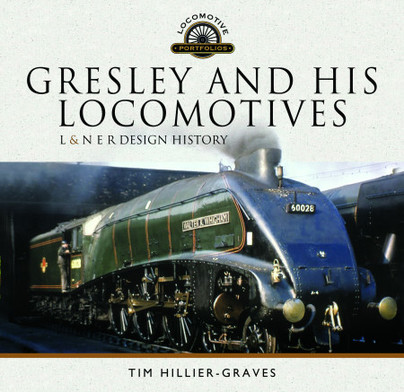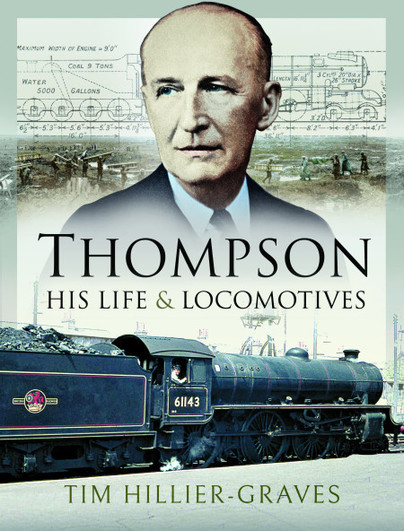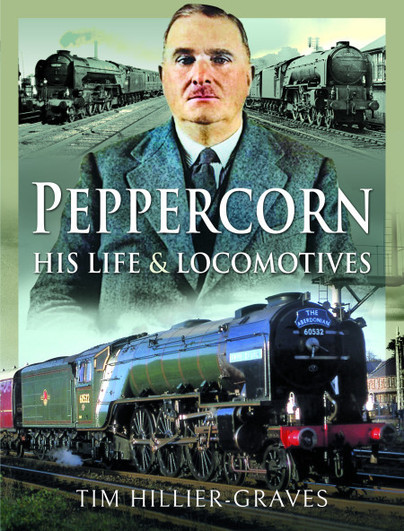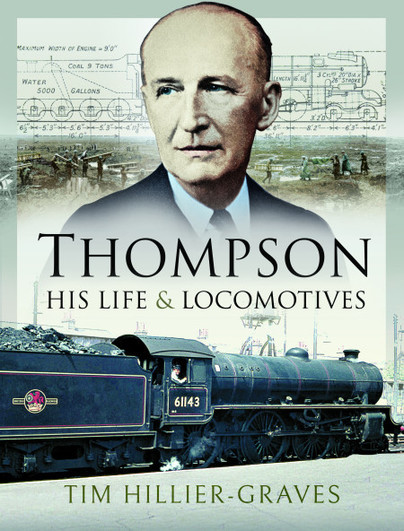Author Guest Post: Tim Hillier-Graves
Gresley and Thompson – A Controversy Analysed and Untangled

I had just finished a series of books about the LMS, when Pen and Sword’s Commissioning Editor suggested that Edward Thompson might be a worthy subject for me to pursue – his life and work being long overdue for re-assessment. My first reaction was ‘not him!’ he tried to destroy Gresley`s legacy out of spite and has, in many people’s eyes, become a pariah for doing so. Quick as a flash I suggested writing about Gresley and then Peppercorn instead. As a compromise we struck a deal and a trilogy was born – all three men, a volume each, but interlinked to show cause and effect and bring into play the teams that supported their great endeavours along the way.
As my research deepened and explanations were forthcoming, I came to see all three men in a new light. Yet what surprised me most, as many facts emerged, was my reaction to Thompson. I came to see him as a man of greater substance, in peace and war, than I had suspected existed. It also became clear to me that opinions of his personality and work appear to have been formed by later authors who weren’t party to these events, the true history, the politics and the reality. They seem to be writers who slipped far too easily into the ‘Gresley – good`, ‘Thompson – bad` mind set, often basing opinion on conjecture or dubious truths. The reality couldn’t have been more different and the controversy that has existed for many decades can be seen in a new, and I think, truer light.
Thompson was a leader and engineer of great quality who managed very effectively in the most difficult and trying of circumstances. And contrary to received wisdom his actions in questioning some aspects of Gresley’s legacy, and rebuilding some of his locomotives in the process, were not sponsored by envy or maliciousness. In reality, as this book reveals, there were sound practical reasons for doing so. In addition, he faced huge pressure from the company’s General Manager and the Running Department to take action to ensure the engines he had inherited continued to operate effectively. And when it came to new developments he was prepared to explore other solutions and innovate where necessary. And here he undoubtedly followed the advice and guidance of his Chief Draughtsman, Edward Windle and others senior members of his team, so his decisions were taken in isolation.
What emerges in this book is a more balanced picture of the man and his achievements in peace and war. It unravels the often complex relationship between he, Gresley and the teams they led. It also sets this story in context, investigating and describing the times in which they lived and how events, opportunities and luck shaped their careers and destinies. In so doing, material is introduced that casts new light on his life and work and opens the way for a better understanding of Thompson and all he did. In truth he was war hero, a talented CME and a man of substance who is worthy of our admiration and respect. This book gives him belated credit for doing a near impossible job in the most trying of circumstances.



Tim Hillier-Graves’ LNER Trilogy as published by Pen and Sword. `Gresley and His Locomotives` appeared in late 2019. ‘Thompson. His Life and Locomotives’ was published 31st January 2021 and the final volume will appear during 2021 as well.


